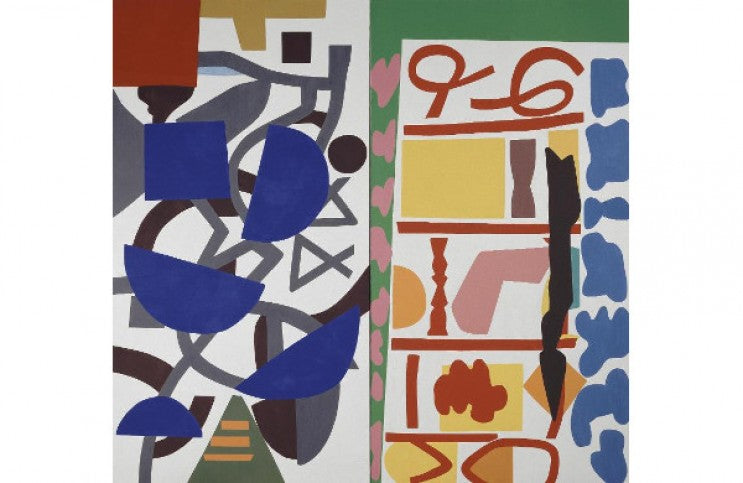
The Exuberant Abstraction of Shirley Jaffe
This spring, the Centre Pompidou is honoring the remarkable abstract painter Shirley Jaffe with the retrospective exhibition aptly named An American Woman in Paris. For Shirley, a New Jersey native, Paris was home for many decades, and after her passing in 2016, a significant portion of her rich body of work was donated to the French State.
Throughout her career, she drew inspiration from both European and American artists, while at the same time showing a great amount of artistic independence and individuality. As an artist, Shirley was relentless in her commitment to her work, constantly exploring modes of expression within the realm of abstraction. The directness and tenacity of her artistic approach earned the admiration of her colleagues, who recognized her profound and personal need to express herself in an authentic light. In an interview with art historian Merle Schipper, she explained: “People who make pictures have to give that expression, to try to find within themselves in some way that kernel of life”.
Discovering Paris
Born in Elizabeth, New Jersey in 1923, Shirley pursued a career as an artist, graduating from Cooper Union in 1945. She first arrived at the French capital in 1949, when her husband, Irving Jaffe, went to study in the Sorbonne on his G.I bill. It was an exhilarating experience for Shirley: she embarked on a journey of artistic discovery, visiting every contemporary gallery, and immersing herself in the city’s art scene. Her studio became a gathering space for the Parisian art community, welcoming local colleagues as well as countless visitors from America.
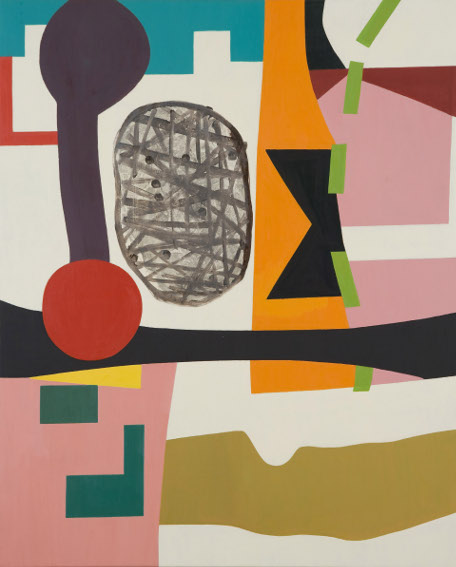
Shirley Jaffe, Networking, 2007. 73 x 60 cm, huile sur toile. Ph. Bertrand Huet / tutti image. Courtesy Estate Shirley Jaffe et Galerie Nathalie Obadia, Paris/Bruxelles. © Adagp, Paris, 2022
However, this new sense of liberation was accompanied by adversity and a struggle to balance her personal and professional life. In a letter to Schipper, she recounted the difficulties of her early career: “Girls have few role models as examples of successful creative artists and we have a hard time learning that fighting for our work is not something to be ashamed of as unfeminine. The manipulative passivity we have often been exposed to does not prepare us in handling the competitive professional business world.” At the time, she painted in a gestural Abstract Expressioniststyle, producing poignant and colorful canvases. Stylistically, this aligned her with fellow ex-pat artists and personal friends Joan Mitchell, Sam Francis and Jean-Paul Riopelle. Through Francis, she was introduced to art dealer Jean Fournier, who championed her work in his Parisian gallery. During the 1950s, she consistently exhibited her work, participating in group exhibitions in Europe and Asia and receiving her first solo show in Bern in 1959.
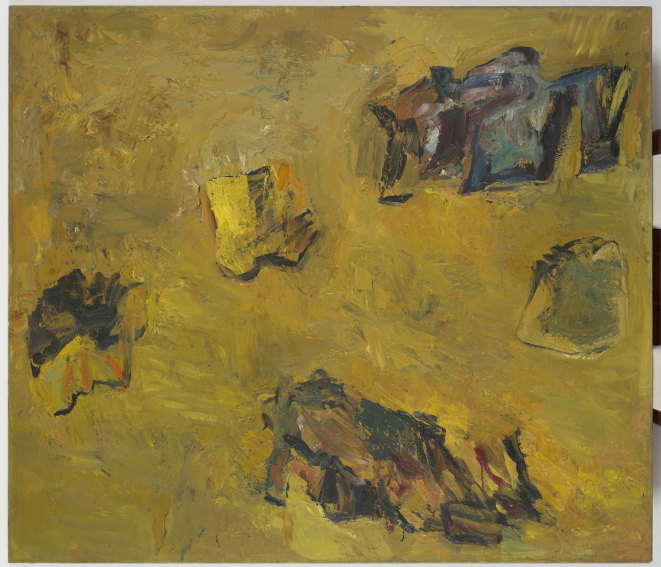
Shirley Jaffe, Sans titre, 1957. 133,5 x 152,5 cm, huile sure toile. Coll. Centre Pompidou, dation 2020. © Centre Pompidou, Mnam-Cci/Audrey Laurans/Dist. RMN-GP. © Adagp, Paris, 2022
Forging Her Own Path
The year 1963 marked a turning point for Shirley. She was recently divorced and awarded a Ford Foundation Grant that secured her a year of residing and working in Berlin. Financial security and a new environment produced the perfect conditions for introspection, allowing her to methodically identify the core of her artistic problems. Following her time in Berlin, she returned to Paris, where she continued to examine her work by meticulously photographing her paintings and evaluating the source of their visual strength. This process urged her to deconstruct her misgivings about Abstract Expressionism and gradually led her to abandon the style and move towards geometric abstraction.
While it was risky to break away from a dominant artistic trend, she realized that her paintings were overworked, and her gestural strokes lacked spontaneity. Still, she was mindful not to lose the emotional quality of her work, which was achieved through the gestural brushstrokes. As a result, she shifted her focus to the potency of her structural formalism, taking inspiration from a variety of sources – from Byzantine mosaics, Art Deco designs, to the abstract cutouts of Henri Matisse and the paintings of Ellsworth Kelly.
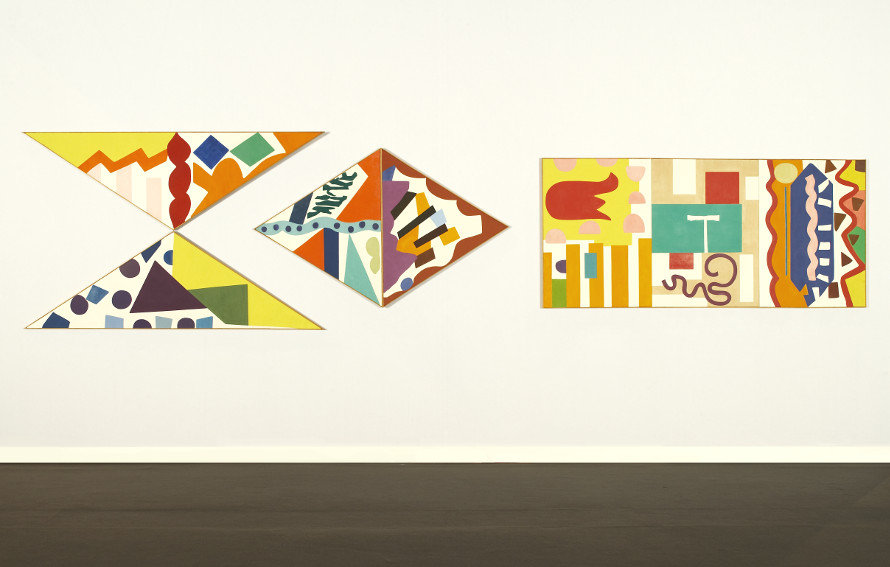
Shirley Jaffe, Malibu, 1979. 128 x 525 cm, huile sur toile. Courtesy Galerie Jean Fournier, Paris. © Adagp, Paris, 2022
The result was intricate, flat compositions made out of carefully assembled sections, each one marked in a different way, through a single color or a graphic sign. Like in a musical piece, each element –shape, line, color or motif – exists in its own right, and when interacting together these evolve into a harmonious whole. Her hard-edged painting of the 1970s brought forth a unique freshness, and as critic John Yau pointed out she was able to masterfully channel her interest in the urban setting: “That Jaffe is able to evoke this with a configuration of images and colors that resist translation while seeming familiar, is the wonder of her work.” Over the following decades, she continued to refine her flat geometric style, pushing her exploration of color and form, showing little regard for contemporary currents and styles.
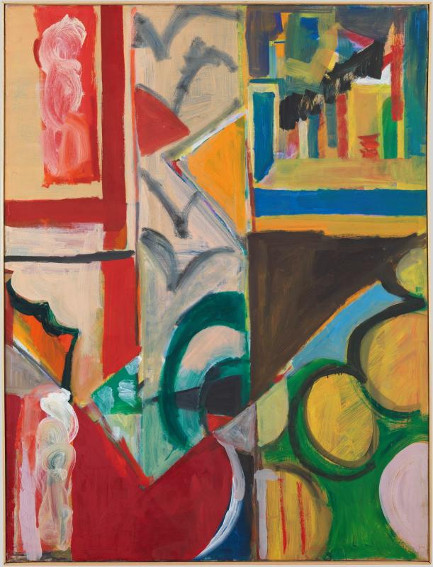
Shirley Jaffe, Sans titre (Little Matisse), 1968. 119,5 x 91,2 cm, huile sur toile. Centre Pompidou, MNAM-CCI/Audrey Laurans/Dist.RMN-GP. © Adagp, Paris 2022.
Cementing Her Legacy
Although she was a well-established figure in the French art scene, Shirley was virtually unknown to American audiences. She was well into her 60s, when she received her first solo exhibition in 1990 at the Holly Solomon Gallery in New York. American audiences celebrated her idiosyncratic style, and her work was regularly shown at the Tibor de Nagy Gallery, which has represented her in the United States since 2002. Simultaneously Shirley continued to thrive in France, being represented by the influential Galerie Nathalie Obadia. Today, her works can be found in some of the most prestigious public and private collections including the MoMA in New York, the Centre Pompidou in Paris, the San Francisco Museum of Modern Art, and the Fondation Cartier for Contemporary Art in Paris.
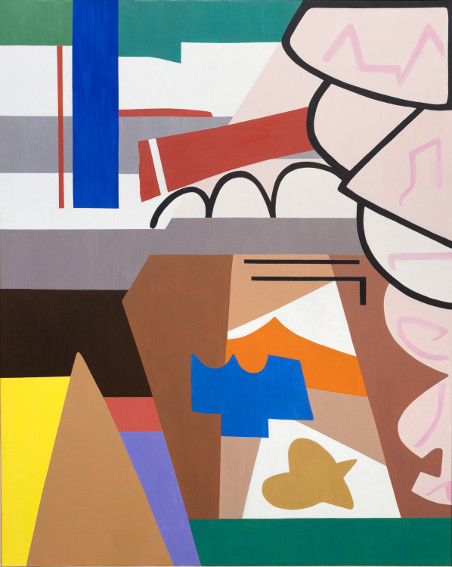
Shirley Jaffe, Hawley, 2011. 160 x 130 cm, Huile sur toile. Courtesy Galerie Greta Meert, Bruxelles. © Adagp, Paris, 2022
Shirley continued to paint at a steady pace well into her 90s, working from her studio on the rue Saint-Victor in the Latin Quarter, where she died in 2016, only days before her 93rd birthday. Even in her final years, she continued to challenge herself and surprise audiences with the vitality and vigor of artworks. In a 2004 interview for BOMB magazine, she said: “I would like painting to make people feel alive, have a sense of stimulation, of possibility.”
Featured image: Shirley Jaffe, All Together, 1995. 240 x 254 cm, huile sur toile. Diptyque. Centre Pompidou, MNAM-CCI/Philippe Migeat/Dist. RMN- GP. © Adagp, Paris 2022






